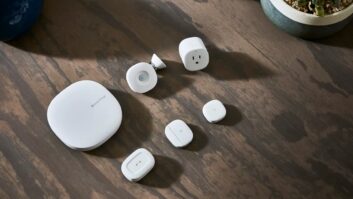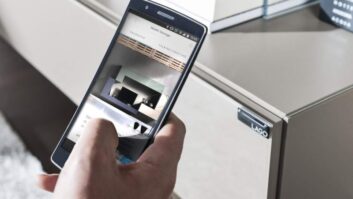Smart-home suppliers are positioning themselves to get the most out of the market’s growth potential by expanding system capabilities, entering new niches and expanding their product selections.
Companies are also making their products more attractive to consumers by making them interoperable with other suppliers’ products.
The growth potential was underscored by a Parks Associates survey that found almost 20 percent of U.S. broadband households own at least one smart-home device, and a lot more consumers want them. About 49 percent of all broadband households plan to buy a smart-home product in the next 12 months, Parks found. Among consumers who own a security system, that percentage jumps to 65 percent.
“Security households, rather than being content with their current system, have a proclivity to add more smart features to their home,” said Parks president Stuart Sikes.
Here’s what suppliers are doing to leverage demand:
GreenIQ: The Israel-based smart-garden supplier is offering a flow meter that monitors irrigation-system water usage by water volume rather than by the amount of time that the system is operating.
The Flow Meter provides more accurate water-consumption usage and enables easier detection of problems with a sprinkler system, the company said.
The device gets inserted inside an irrigation tube and sends daily and weekly water-usage data in gallons or liters to a GreenIQ app.
The sensor comes in 0.75-inch and 1-inch sizes at $54 and $76, respectively, through the company’s online store.
The Flow Meter communicates via wire to the $199 Smart Garden Hub, which features Wi-Fi and 3G cellular for remote monitoring from an app. The Hub connects to multiple smart devices and sensors, including soil-moisture sensors from Parrot, Koubachi to PlantLink.
Kwikset: Five new Z-Wave deadbolt door locks incorporate the new Z-Wave 500 series chip to extend wireless range and enhance encryption. They include the company’s first key-less touchscreen deadbolt.
That model lacks a keyway, preventing lock picking and bumping. The lack of a keyway also creates a sleeker, smaller deadbolt. Its capacitance touchscreen lets users enter a security code. It runs on four AA batteries.
Also new are the Z-Wave Smart Lock Conversion Kit, which converts mechanical deadbolts — including non-Kwikset deadbolts — into connected smart locks, and a five-button deadbolt with new look, one-touch locking and all-metal design.
All of the products will be available by the end of 2016. Pricing has not been set.
Panasonic: The company’s DIY Home Monitoring System has been upgraded to integrate with three Honeywell Wi-Fi smart thermostats.
Panasonic’s system is built around a hub that communicates with sensors and other Panasonic smarthome devices via the wireless DECT-ULE (ultra-low energy) standard, which delivers 1,000-foot range. The hub also incorporates Wi-Fi so users can control home systems via Wi-Fi-enabled mobile devices.
URC: The company’s Total Control home-automation system now controls more brands of home systems, including Philips ZigBee-based Hue light bulbs, Honeywell Total Connect Comfort thermostats, Hunter Douglas Power View motorized shades, and more HVAC systems.
URC added two-way software-control modules for these products to its Total Control systems.
The URC system also now integrates with Cool- MasterNet’s bridge, which integrates Total Control with various HVAC systems, and Tekmar’s tN4 Gateway 482 to control thermostats and setpoint control devices.
Recently URC also announced two-way integration with Bose SoundTouch wireless multiroom-audio products and with Klipsch’s Reference Premier HD Wireless home-theater speaker system. Total Control systems also control Sonos products, DirecTV settop boxes and Autonomic music servers, among other products.
Separately, the company unveiled its first system for security installers, enabling them to add home entertainment and home-system control to a security install.
Vantage: The Legrand-owned luxury lighting-control brand is bringing its first universal dimming module to the U.S. market to control multiple lighting sources of any type, including LED and fluorescent lights.
The InFusion module also features forward- and reverse-phase dimming in the same module, automatically detecting whether a lighting load should be dimmed with forward- or reverse-phase control. Today some LED lights use forward-phase control, some use reverse-phase control, and some manufacturers supply both types. Fluorescent lights also come in forward- or reverse-phase control. Incandescent lights, however, can be dimmed either way.
Yi Technology: The Seattle company’s second Wi-Fi security camera is the step-up $129 YI Home Camera 2, which complements a $50 camera launched last December. The company also offers dash cams and action cams.
The new model will be available on Amazon and at YiTechnology.com in April.
The 1080p camera comes with included 32GB MicroSD card and adds multiple upgrades, including the ability to recognize a human figure and filter out nonhuman objects or activities that generate false alerts. It also detects the sound of a baby crying, sending an alert to the user’s mobile device.
Viewing angle expands by 20 percent to 130 degrees, and the camera adds HDR, lens distortion correction and IR LED night vision.













